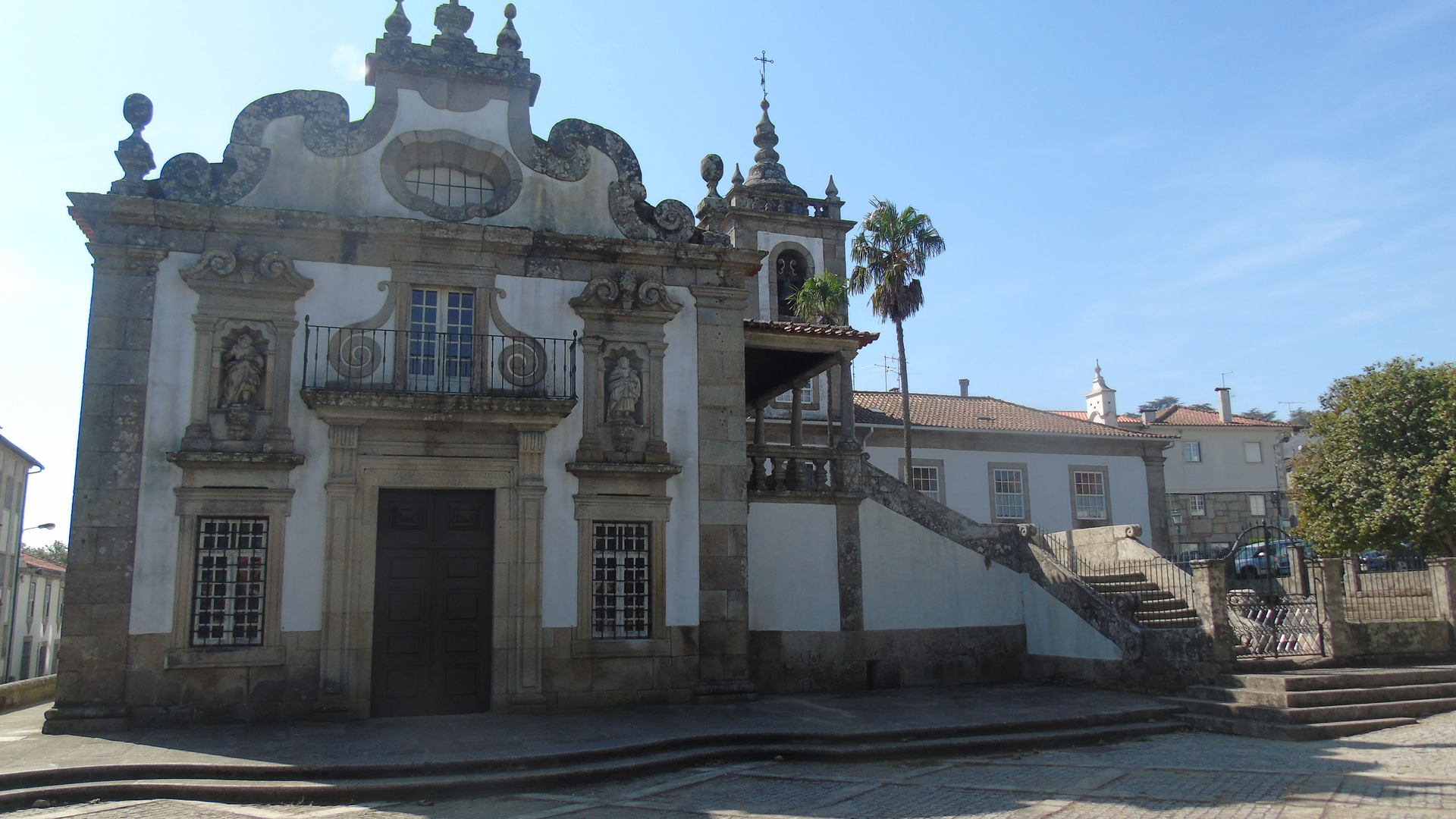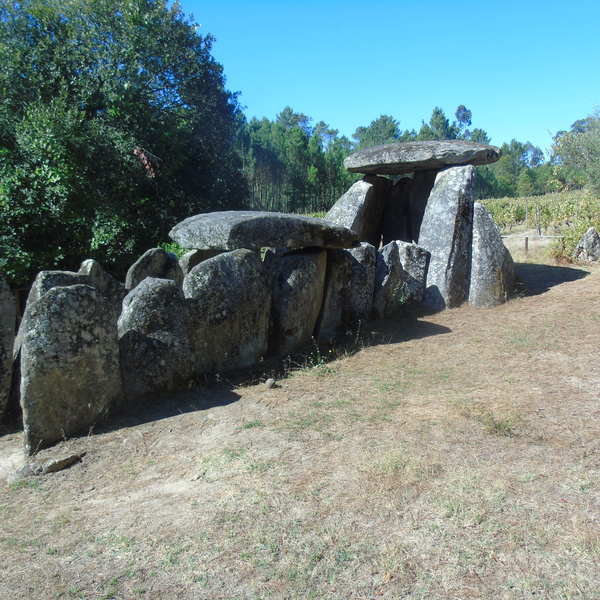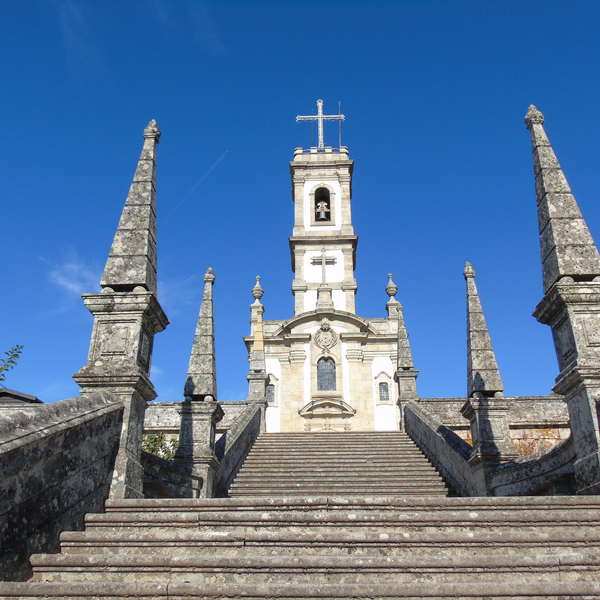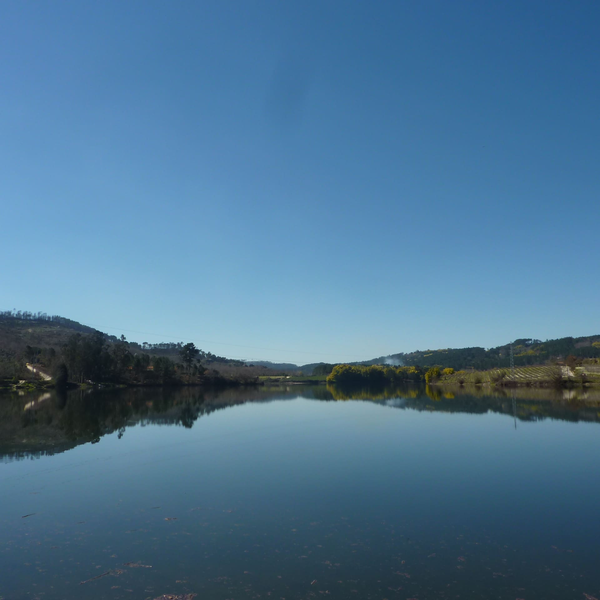
MANGUALDE
On the banks of the River Mondego, the municipality of Mangualde reveals itself, a jewel among mountains, with imposing mountain ranges outlining its horizon. This land of gentle hills stretches towards Senhora do Pranto, crossed by watercourses that feed various river routes. The mild climate, with maximum temperatures in August and minimum temperatures in January, provides a pleasant environment throughout the year.
Its evolution over the centuries reflects different economic and social phases, emphasising the essence of the municipality. Among the landmarks are the Palácio dos Condes da Anadia and the Igreja da Misericórdia, as well as the Ermida de Nossa Senhora do Castelo, which offer a unique blend of architectural and religious heritage.
Mangualde stands out as a destination of excellence in the region, with unique landscapes, an extraordinary heritage and robust tourist facilities. Live Beach, recognised as one of the best urban beaches in Europe, offers entertainment for the whole family. In the parish of Alcafache, a renowned spa offers moments of relaxation in therapeutic waters. The gastronomy, with world-renowned specialities such as Queijo da Serra and Vinho do Dão, completes the experience in the municipality.




Fagilde Dam
HeritageThe Fagilde Dam is a Portuguese dam built on the River Dão. The dam takes its name from its location near the village of Fagilde, in the parish of Fornos de Maceira Dão - Mangualde.
More information

Road N16 (Chãs de Tavares)
HeritageNational Route 16 connects the coast to Spain, and at kilometre 123 you'll find a straight stretch lined with centuries-old cedars.
More information

Monastery of St Mary of Maceira Dão
HeritagePrior to the foundation of Portugal, the Royal Monastery of Santa Maria de Maceira Dão, built by Dom Soeiro Teodoniz in 1173 in one of the houses in Fagilde that had been donated to him by Dom Afonso Henriques in gratitude for the cure of a relative, initially belonged to the Benedictine order before joining the Cistercian order.
Its meticulously chosen location, on a fertile plain and next to a river, allowed the monks to support themselves, meditate and worship in a peaceful, bucolic setting. Its construction and the royal benefits granted were part of the policies facilitating the settlement of populations during the Christian Reconquest, initiated by the Counts of Portucalenses and reinforced by Dom Afonso Henriques. The architectural complex consists of a church and sacristy, chapter house, cloisters, kitchen, refectory, cells, library, infirmary and agricultural outbuildings. The various stages of the building's construction are visible, from the 12th century to the extinction of the monastic orders in 1834.
The tower dates from the 12th century, the building and cloisters from the 17th century and the elliptical church from the following century. Classified as a National Monument since 2002, its state of conservation is calamitous, and the owner, the local authority and the state are developing processes to make it possible to safeguard it physically.
More information

Chapel of Our Lady of the Castle
HeritageThe Church of Our Lady of the Castle is built on top of the hill of the same name, on the site of the old fortified settlement from the Iron Age and later Romanized. It was inaugurated with the enthronement of the image of Our Lady of the Castle in 1832.
Made up of two bodies, a central nave and a chancel, the main façade's crenellated tower stands out, rising 38 meters into the clouds. A neoclassical temple, its interior is bright due to the sky blue ceilings. In the elegant chancel, there is an altarpiece with high steps, on the central throne of which is the sovereign image of the Virgin with the child on her lap.
Crowning the hill, the hermitage is part of the sanctuary made up of the staircase and annexed chapels, built in the 18th century in the Baroque style. Dominant over a vast geographical region, it exerts a mystical and religious power that goes beyond the boundaries of the municipality of Mangualde.
Classified as a Monument of Public Interest since April 29, 2013.
More information

Mondego River and Ponte da Barca
HeritageThe Mondego is Portugal's fifth largest river and the first to have its course entirely in Portugal. Here, on the right bank of the River Mondego, in the Poço Mourão area, the remains of an old bridge, Ponte da Barca, are still standing.
Set on a hard granite slab, elements of the bridge's ironwork are still visible. The ruined structure was used for a long time.
More information

Bom Sucesso Hillfort
HeritageIt is located on Monte da Senhora do Bom Sucesso, at an altitude of around 765 meters, in Chãs de Tavares. Archaeological remains have been known on this hill for a long time. Discovered scientifically by Leite de Vasconcellos in 1917, the remains indicate that the hill was occupied during the Bronze Age and continued into the Iron Age and Roman period.
Today, the housing and defensive structures are no longer visible. The top of the old settlement can still be reached via a slabbed road with Roman foundations. With its simple architecture, but high symbolic significance and great devotion for the community, the hermitage in honor of Nossa Senhora do Bom Sucesso has stood there since at least the 18th century.
The hill has been classified as a National Monument since December 31, 1997.
More information

Roman Inn of Raposeira
HeritageOnce the Lusitanian resistance was overcome, the Roman troops and settlers advanced throughout the Iberian Peninsula and remained here for several centuries, leaving their civilizational marks well etched. Significant traces of this centuries-old occupation have been found throughout what is now the municipality of Mangualde. Spread across the lowlands and mid-slopes, the Luso-Romans inhabited around half a hundred of the housing structures identified today.
At the foot of Senhora do Castelo hill, an ancient fortified Iron Age hillfort, the archaeological structures that have been uncovered are an inn, what the Romans called a mansio. It sheltered and welcomed passers-by who traveled through the empire and rested there, enjoying a relaxing bath in its private thermal baths. Excavated in the late 19th century, backfilled and re-excavated at the end of the 20th century, the archaeological site shows that it was occupied from the 1st to the 4th century.
Initially thought to be a villa - a large agricultural manor house - today it is thought to be a mansio, due to the interpretation of the architectural structures and the crossing, in its vicinity, of two important imperial roads, one which, climbing the Estrela, connected Mérida (the Roman capital of the Province of Lusitania) to Bracara Augusta and the other which connected Bobadela (in the current municipality of Oliveira do Hospital) to Viseu (Vissaium).
The Estalagem Romana da Raposeira has been the subject of conservation and restoration work and has been classified as an Archaeological Site of Public Interest since July 24, 2014.
More information

Misericórdia Church
HeritageBuilt by Simão Paes do Amaral between 1721 and 1764, the Misericórdia Church in Mangualde is the work of Gaspar Ferreira, an architect and carver from Coimbra.
The building consists of the church and sacristy, the orderly house, tower, chaplain's houses and ground-floor storage. The harmonious ensemble has some peculiarities that make it stand out from the vast architectural heritage of the municipality and the city. In fact, the originality of a wide-open veranda over a courtyard stands out, as if it were a residential manor house. At the same time, the bell tower is not directly attached to the church itself, but integrated into the architectural ensemble. It is therefore an example of the primitive “houses of mercy” of the 16th and 17th centuries. Inside, in the chancel, it's the Joanine altarpiece, the most artistic in the entire Diocese of Viseu, which attracts attention for its Baroque splendor.
The ceiling features 15 extraordinary painted panels from the 18th century. The temple's side walls feature tiles from the Coimbra school depicting Marian symbols and various religious scenes, such as the Wedding of Canaan, St. Martin and the Multiplication of the Loaves and Fishes. The tiles in the chancel date from 1724, while those in the central nave date from 1746.
The wooden ceiling of the central nave is covered in its entirety by a magnificent trompe l'oeil painting depicting Our Lady of the Assumption. It has been classified as a Monument of Public Interest since 1977.
More information

St Julian's Parish Church
HeritageThe Church of São Julião, Mangualde's parish church, has been a Monument of Public Interest since 1983 and is part of a churchyard that has also been classified in the same category since 1997, along with the crosses of the Way of the Cross - which extend to Avenida da Liberdade. This is an important piece of religious architecture.
The church, which was founded on the basis of a small rural monastery in the years before nationality - the middle of the 11th century - became the parish church of the then municipality of Azurara around the 12th century. Subject to multiple interventions over the centuries, little or nothing remains of the old Romanesque building. As the oldest building, part of the nave wall on the south side is visible, in Romanesque-Gothic style and dating from the time of King Dinis. The various ‘scars’ show precisely the various restoration, conservation, reconstruction and expansion actions. It is inside that the greatest beauties are to be found.
The chancel is the greatest ‘treasure’: a National Style altarpiece from the early 18th century and a panelled ceiling made up of 18 painted coffered ceilings depicting apostles, doctors of the church, Our Lady and St Julian.
The walls also display paintings from the old Mannerist altarpiece. Next to the floor, on the side walls of the altar, two narrow strips of polychrome Sevillian tiles bear witness to the renovation carried out by Fernão Cabral. The churchyard is the old medieval cemetery.
More information

Anta da Cunha Baixa
HeritageAround 6000 years ago, small communities roamed and lived in these areas, sheltering in structures made from plant materials and natural shelters. They were dedicated to herding, hunting, fishing, gathering food from the wild and even rudimentary agriculture. Their utensils were made of wood (bows and arrows), bone and stone (millstones for obtaining flour, axes, hoes, microliths for making knives and arrowheads) and ceramic containers, as well as objects of adornment (necklace beads).
The belief in life beyond death led to the construction of large stone tombs, which combined a funerary and religious character. In these megalithic tombs - the dolmens or dolmens - the bodies, or the remains of the bones, of a small number of people were laid to rest, certainly the elite leaders of these communities. The dolmen of Cunha Baixa was built in the 3rd millennium BC and, leaning against the Castelo River, it clearly marks the plain and the surrounding landscape. It is part of the region's megalithic network: Orca dos Padrões, Orca dos Braçais, Orca de Alcafache, Anta da Senhora do Castelo, Orca dos Amiais, Orca da Carvalhinha, Orca da Fonte do Alcaide and Orca dos Palheiros.
The monument has a chamber covered by a large slab, which is accessed via a long corridor, also covered by horizontally arranged slabs. The entrance was closed off by a stone that functioned as a door, which was removed when new deposits were made. There were red paintings on the slab at the head of the chamber, as well as engravings on some of the pillars in the corridor. The dolmen was covered by a huge mound of earth and stones (mamoa), which has since been destroyed by man and/or erosion. Restored in 1987, the remains exhumed during the various studies have been shared between the National Archaeological Museum and the Arganil Municipal Museum.
The Cunha Baixa Dolmen has been a National Monument since June 16, 1910.





